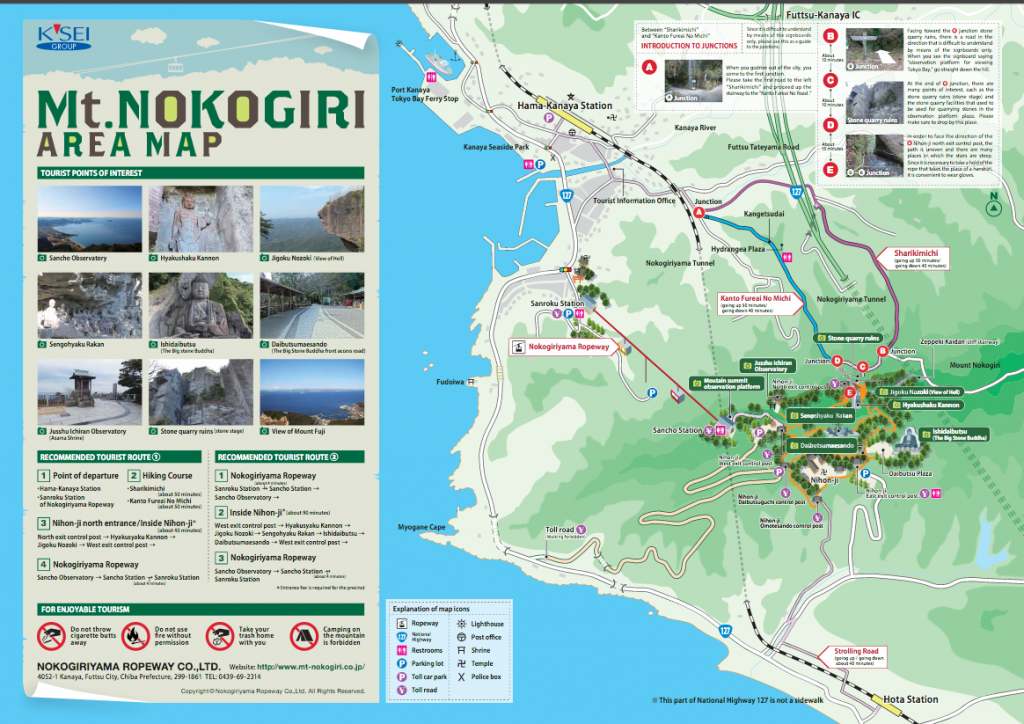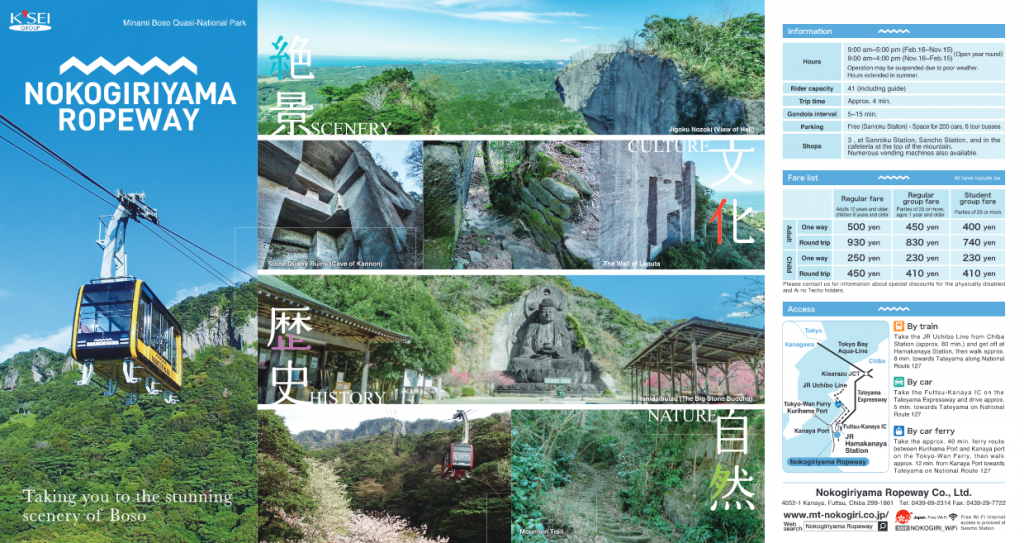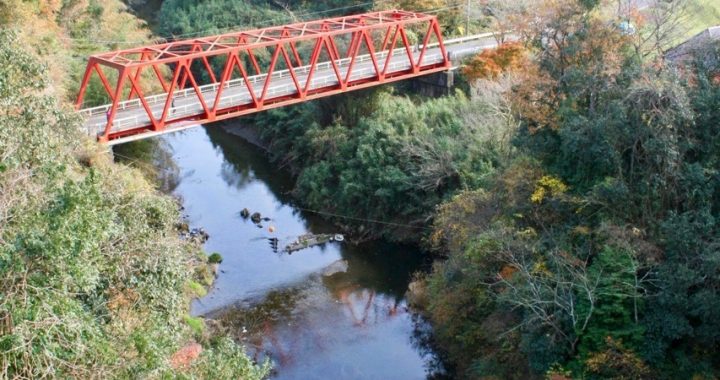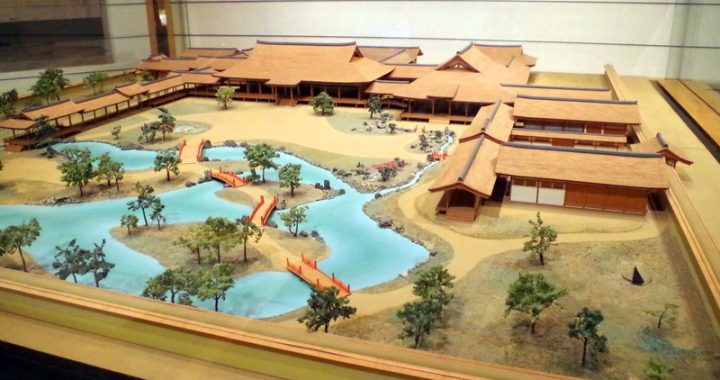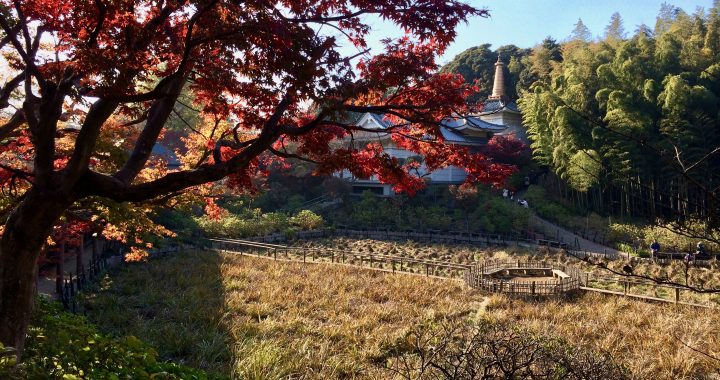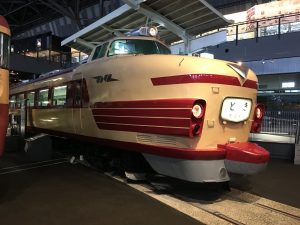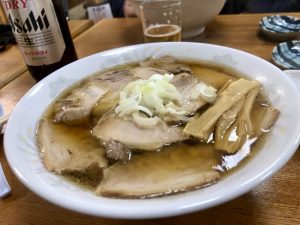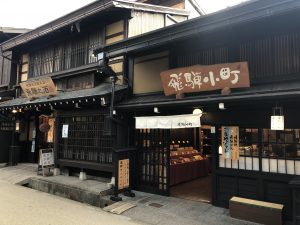Buzz-saw Mountain
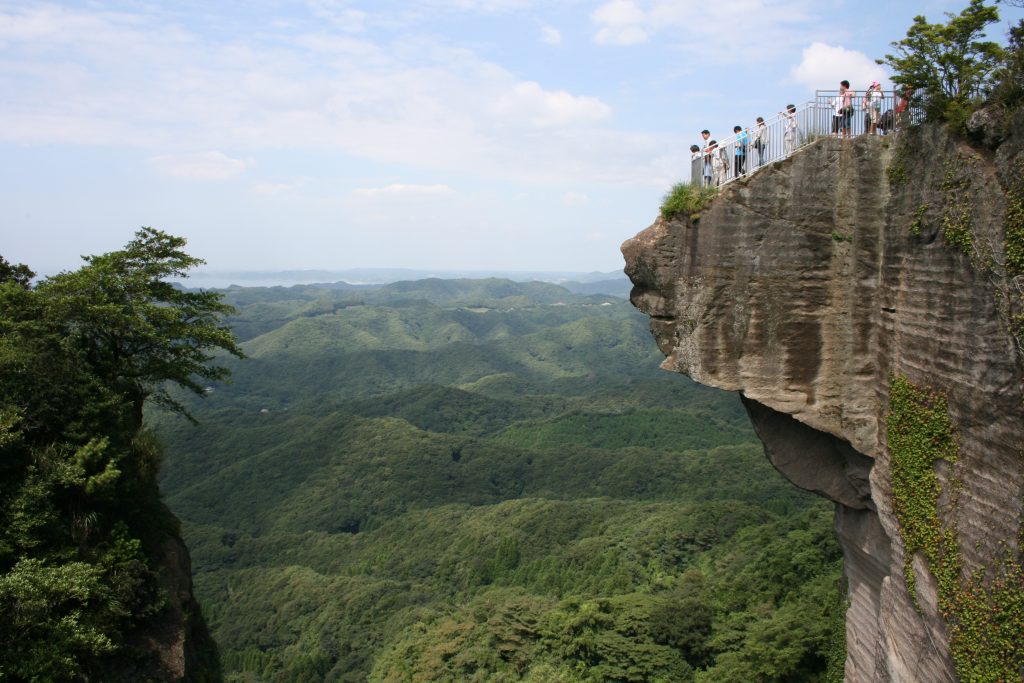
| Good points | Not so good points |
| Fairly few tourists | Far from Tokyo |
| Spectacular scenery | Not much else nearby |
| Variety of things to see | Physically challenging (many steps) |
Buzz-saw Mountain, located in Chiba, Japan, is a popular tourist destination known for its unique, saw-tooth shaped peak. The mountain is a part of the Boso Peninsula, a mountainous area located on the eastern side of the main island of Honshu. With its towering height and impressive geological formation, Buzz-saw Mountain offers breathtaking views and an unforgettable hiking experience to visitors. The mountain is easily accessible via the Buzz-saw Mountain Ropeway, which takes visitors to the summit for panoramic views of the surrounding area.
The summit and surrounding mountain top is home to Nihonji Temple, which houses some unique historical monuments and offers a walk down the gentle side of the mountain lined with what i s said to be 1000 ancient statues, culminating in the biggest stone Buddha in Japan.
Getting to Buzz-saw Mountain from Tokyo
Buzz-Saw mountain is about 2.5 hours away from major Tokyo stations by bus or regular train. There are two stations nearby, Hama-Kanaya Station and Hota Station. Hama-Kanaya is the main station close to a few restaurants and the ropeway to the mountain summit. Hota Station is a local, rural station that is closest to the foot of the temple complex should you want to walk down rather than take the ropeway. Both stations are served by the same trains so either can be used.
On weekends and public holidays there is a special express train run by the JR railways called the Sazanami Express. There is more information here. Usually there is only one train out and one train back. The information is on Google Maps and currently the out-bound train starts at 7:50AM from Shinjuku Station to Hama-Kanaya Station (we recommend getting off there on the way out). If you are going back to Shinjuku the express train is at 16:21 from Hota Station or 16:25 from Hama-Kanaya Station.
If going to Buzz-Saw mountain on a day trip it is highly recommended to book the express at any JR station as the regular trains will take nearly 3 hours one way. 4-5 hours is enough time to take a leisurely look around the temple complex including lunch at the summit.
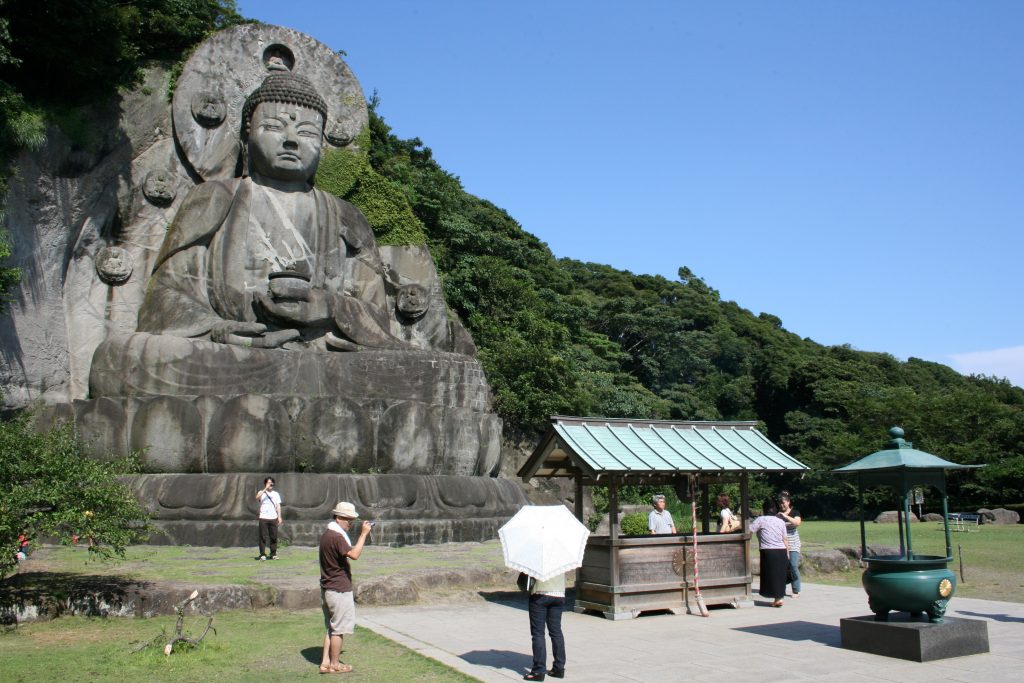
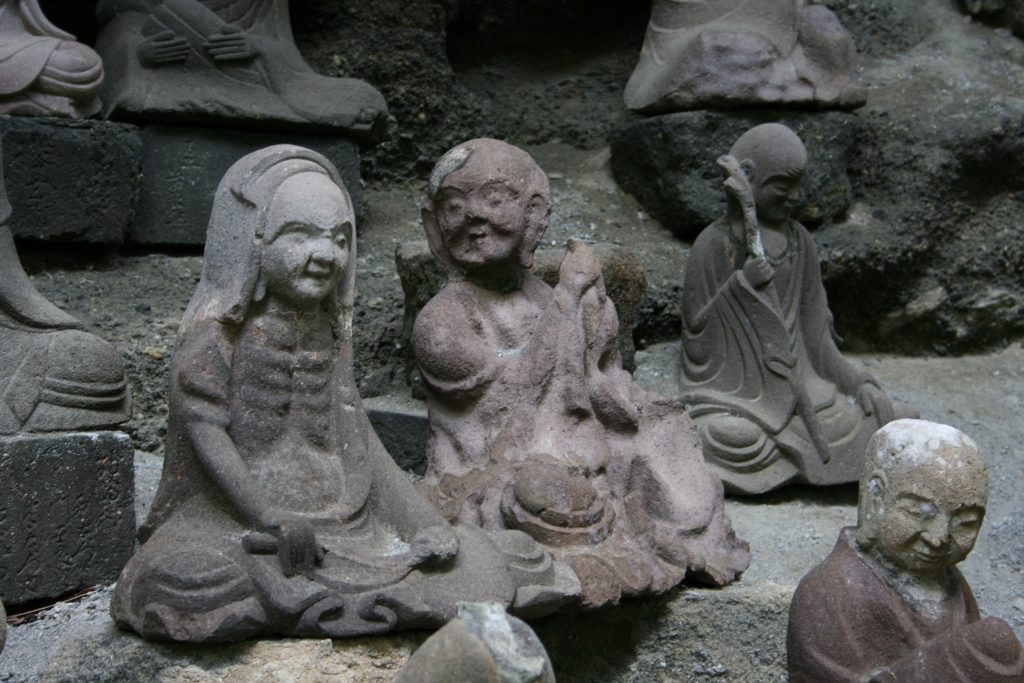
Another recommendation is to stay overnight in Chiba City as part of a small tour of the area. Chiba City is easier to access with more express trains from Tokyo and is a busy enough city to offer a variety of hotels, restaurants or bars.
1) Travelling to Hama-Kanaya station
As mentioned, there are 3 major options
- Express Train “Sazanami” from various stations in Tokyo. The stations stops in Tokyo are Shinjuku, Akihabara and Kinshicho.
- Regular express train to Chiba and change for the Uchibo Line to Hama-Kanaya station
- Bus to Kisarazu Station and change for the Uchibo Line to Hama-Kanaya station
The 3rd option will allow you to stop off at the Umi Hotaru, however the timing will be fairly tight.
2) Arriving at Hamakanaya Station
Buzz-saw mountain is located in a small rural town with trains running very infrequently, so don’t miss your train (especially on the way back – you have been warned!)
You should arrive just after 10am. Walk to the rope-way station. When Japan suggests eating lunch at the restaurant on top the mountain, however there are other options (see below).
Buy a one-way ticket (we recommend walking back down however if your knees can’t handle several hundred steps then a return ticket is probably best) and journey up. It costs ¥500 for adults, ¥250 for under 12s.
TIP! There is a grill yourself all-you-can-eat seafood restaurant nearby. The quality of the food isn't great, and the building gets extremely hot inside during summer (no air-conditioning and 50 gas grills). We strongly recommend not to go to this restaurant in summer. During cool days, the experience is delightful, however if they have a booking for a large group you may be turned away. There are a couple of other restaurants nearby you could try, including Ramen, family restaurant Gusto, plus others.
3) On top of the mountain – what to do?
The only place to eat is where you get off the rope-way car. When Japan recommends the curry rice for ¥660. There are no restaurants once you descend the mountain by foot (if following this day trip plan) so eat now, unless you had lunch at one of the options mentioned before.
Quick tip: The first mountain view you see after exiting the rope-way station building is not “The Famous View™”. “The Famous View™” is a 5-10 minute walk away so don’t spend ages admiring the first view you see like it doesn’t get better (it does).
If you continue along the 5-10 minute walk, you will pass through the entrance to the Nihonji Temple complex, which is ¥600 for adults and ¥400 for children. Once you enter you cannot come back out again without paying again. The Nihonji Temple website is all in Japanese however the map is very easy to figure out. Note that there is a “quick” route down to the stone Buddha which bypasses most of the complex, so don’t take that route.
Inside the temple complex you can: –
- Walk out on top a cliff and get a spectacular 360° view.
- See a Buddhist carving (was featured in British TV show Top Gear’s Japan race).
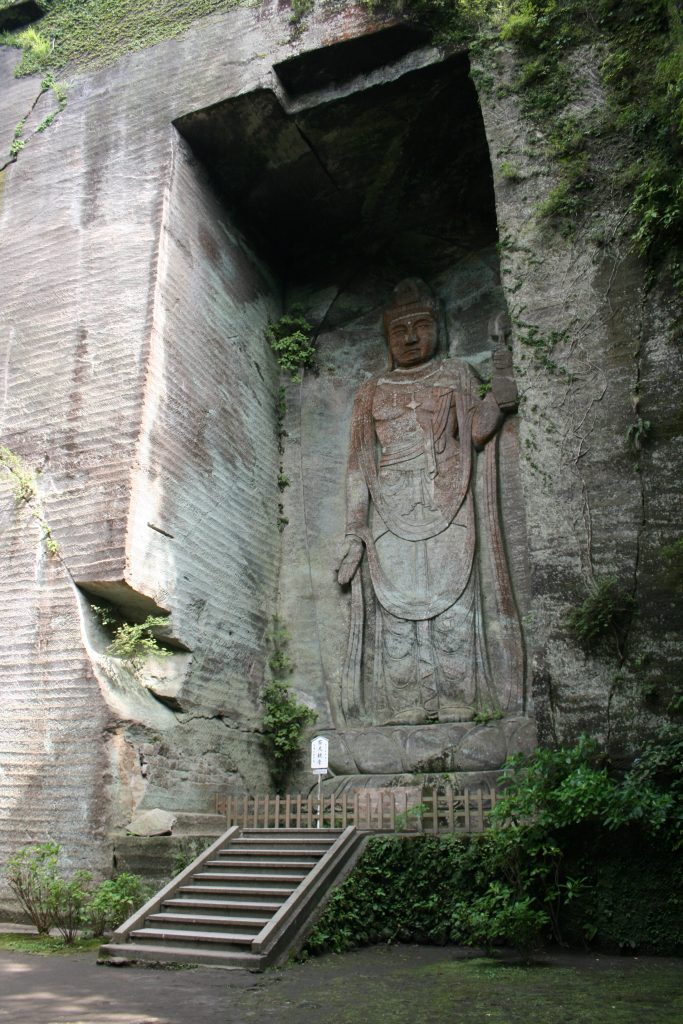
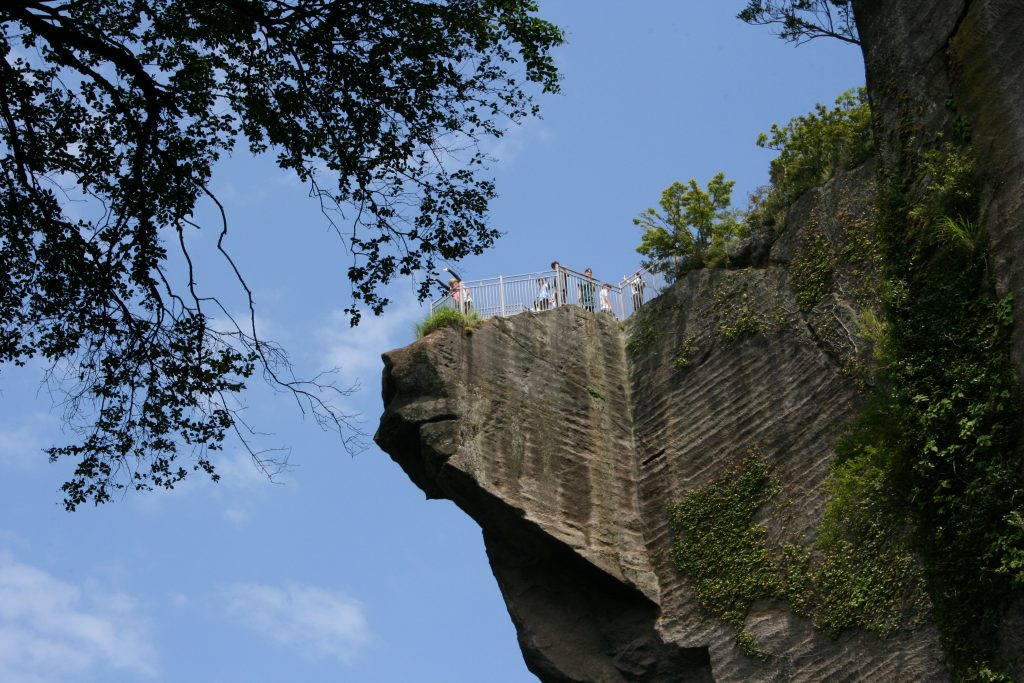
- Leisurely walk down the back side of the mountain counting the 1500 Buddhist statues. Check out their unique facial expressions.
- Gaze upon the largest stone Buddha in Japan (which is way more impressive than the more famous Buddha in Kamakura – but with fewer tourists!)
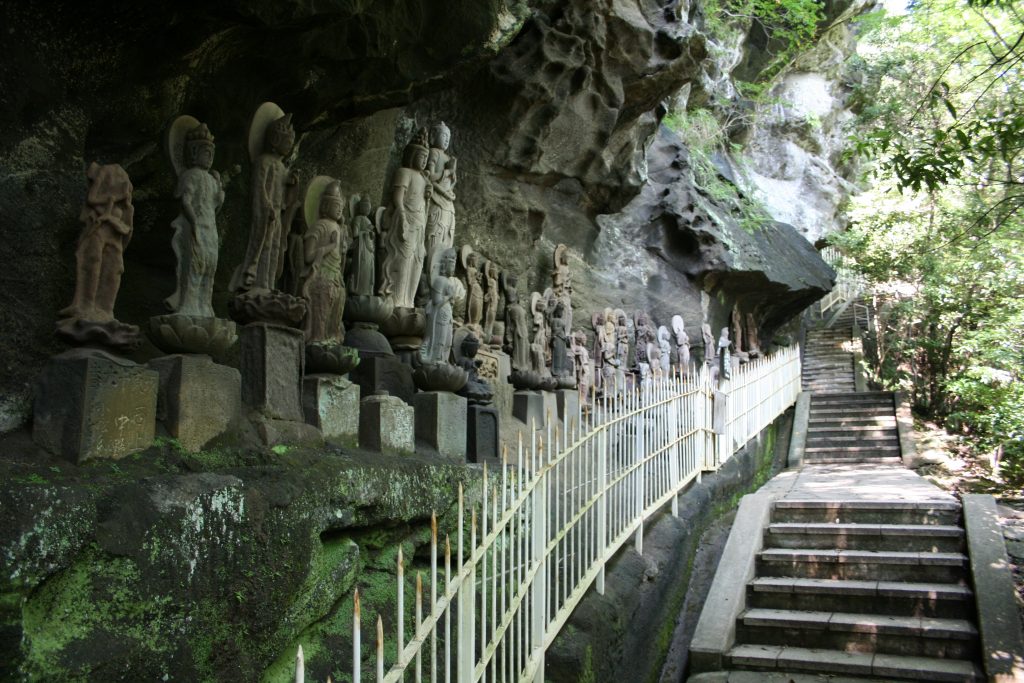
4) Heading back to Tokyo
Congratulations! You are now on the wrong side of the mountain to get back to the station you arrived from! However, it is recommended that you push onto nearby Hota station, which is a pleasant 30 minute walk through traditional Japanese countryside.
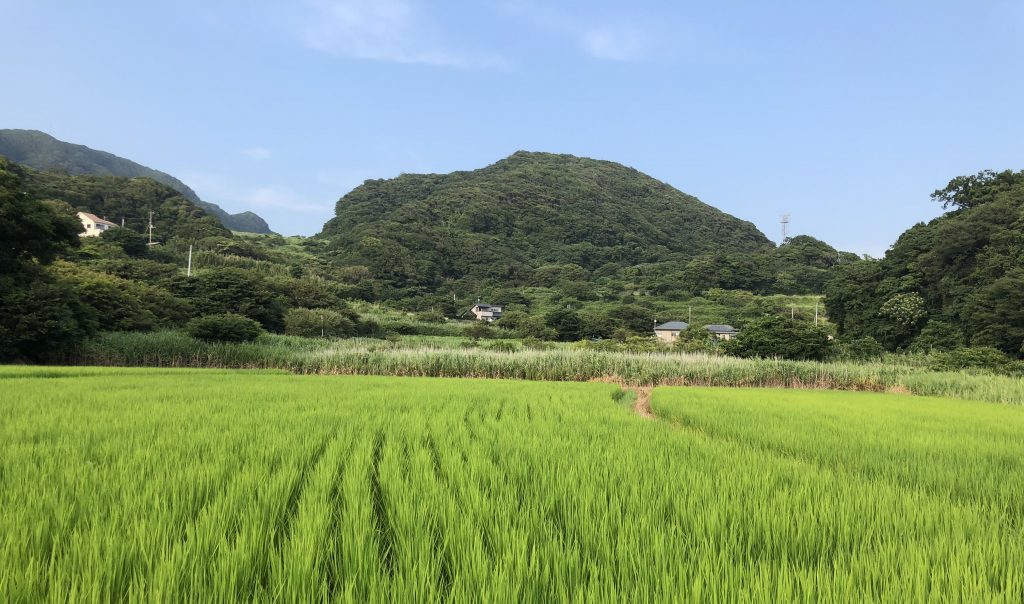
The trains in rural areas are very infrequent and there is nothing much near the station to keep you busy or fed. So don’t miss this train! The 16:42 train runs every day and will take you directly to Chiba city, where you can get some food. When Japan recommends the “Arigato” local chain of Japanese pubs, with the main restaurant located in Chiba city. It is an authentic experience and the main home page supports English (it even has discount coupons).
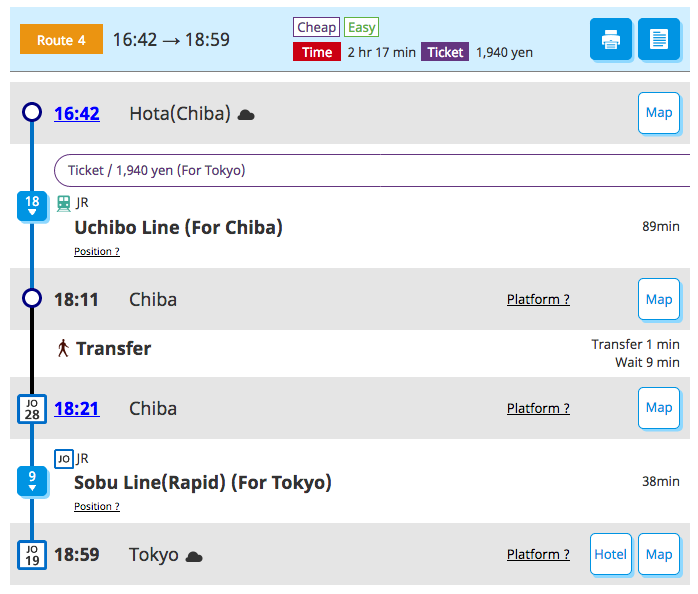
After dinner in Chiba city you can head back to Tokyo. There are plenty of trains that go direct to Tokyo Station (Sobu Line Rapid – blue trains) or Shinjuku station (Chuo-Sobu Line – yellow trains). Just enter Chiba station and take the next train you need.
Other things to do in Chiba
Yorokeikoku – Hiking in Chiba
Travelers to Japan in November and December should make at least one effort to hike the countryside for the fall leaves display, with the stunningly deep red of the Japanese Maple the star turn.When JapanTweet When viewing Autumn Leaves in Japan’s busy fall season it is always a good idea…
National Museum of Japanese History
Uncover Japan’s history at the National Museum of Japanese History, located one hour away from Tokyo. This modern and comprehensive museum provides a unique glimpse into the country’s past. A visit may be ideal for those seeking a deeper understanding of Japan’s history. #SakuraHistoryMuseum #Japan #HistoricalDiscoveriesWhen JapanTweet The GoodThe Not-So…
Hondoji Temple
Hidden away in the no-man’s land between Tokyo, Chiba and Saitama, Hondoji Temple is an island of calm that has stunning displays of autumn leaves come the end of November, with very few foreign tourists.When JapanTweet Hondoji is a great temple to visit while in Japan during the end of…
Chiba city
Chiba city is located about two hours east of Tokyo and is the urbanized gateway into Chiba prefecture’s rural peninsular of sparely populated towns and flat expanses of rice paddies. When JapanTweet Chiba city is the last urbanized area before the expansive Boso peninsular to the east. While Chiba is…
